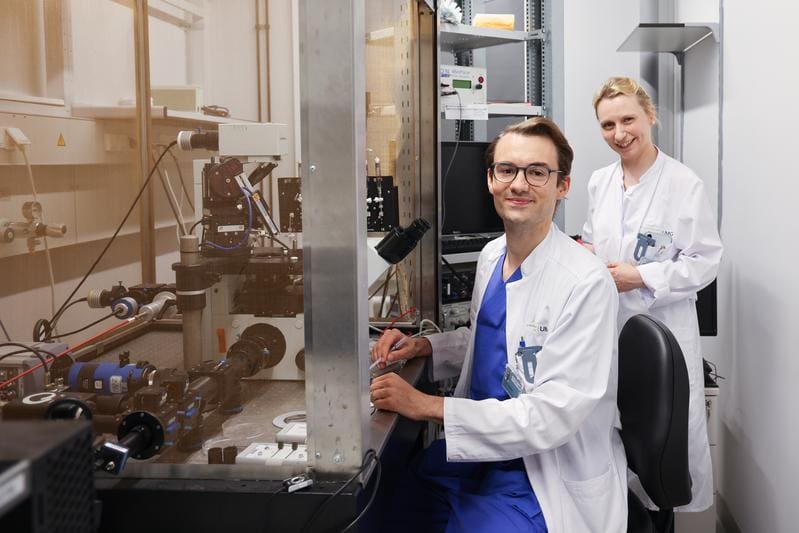European research project develops gene therapy for heart failure
Researchers at the University Medical Center G├Čttingen (UMG) under the direction of Prof. Dr. Constanze Schmidt, Director of the Department of Cardiology and Pneumology, are working on a novel gene therapy for the treatment of heart failure as part of an international project. The CONDUCTION-GTx project, funded with around 500,000 euros by the German Center for Cardiovascular Research (DZHK), aims to restore electrical conduction in weakened hearts and to sustainably improve the treatment of the disease.
Heart failure affects about four million people in Germany and over 15 million across Europe. With more than 450,000 inpatient treatments per year, it is one of the most common causes of hospitalization. Disturbances in the electrical signal transmission of the heart contribute significantly to the burden of disease. Traditional treatments such as pacemakers or cardiac resynchronization devices relieve symptoms, but they do not correct the underlying cellular defects and are not equally effective for all patients.

The three-year CONDUCTION-GTx project, part of the International Cardiovascular Research Partnership Awards (ICRPA), is being implemented by a consortium of research institutions in Germany, the UK, France and the Netherlands. In addition to UMG, Imperial College London, Amsterdam University Medical Center and the University of Bordeaux are involved. The total funding amounts to two million euros, with the UMG being headed by Prof. Schmidt and Priv.-Doz. Dr. Felix Wiedmann. The aim is to develop a gene therapy that uses a specially developed virus to introduce genes into heart muscle cells. These genes promote the production of proteins that improve electrical signal transduction, particularly by regulating sodium channels, gap junctions, and the transcription factor Tbx5.
The therapy will initially be tested in preclinical studies on animal models and human heart tissue, supplemented by computer-aided simulations to optimize the application. Another focus is on the detailed analysis of the ventricular conduction system using modern methods such as spatial transcriptomics and optical representation of excitation propagation. These analyses are intended to create a comprehensive understanding of cellular processes and form the basis for future therapies. Since 2018, the ICRPA program has been promoting innovative preclinical research with high clinical relevance and strengthening international collaborations in cardiovascular research.
Scientific background:
The focus is on three central target structures that have been shown to influence the transmission of stimuli in the heart: (1) sodium channels, which ensure that sodium ions reach the heart muscle cells quickly and electrical signals are reliably transmitted, (2) the so-called gap junctions, junctions between neighboring heart muscle cells that enable the direct exchange of electrical impulses, and (3) the transcription factor Tbx5, which controls the activity of certain genes. which are crucial for the development and function of the conduction system. Disturbances in any of these areas can impair electrical signal transmission in the heart and thus impair heart function. This is exactly where gene therapy comes in by introducing genes into the heart muscle cells that help to restore or improve the function of sodium channels, gap junctions and the transcription factor Tbx5. The effect of the therapy will initially be tested in preclinical studies in animal models and on human heart tissue. The project will be supplemented by computer-aided simulations that will calculate the transferability to humans and the optimal administration of the therapy.
Another focus is the comprehensive analysis of the ventricular conduction system in healthy and damaged human hearts, which is unique in Europe. The ventricular conduction system is a specialized system in the heart that is responsible for the coordinated and rapid spread of excitation in the ventricles. Modern methods are used, such as spatial transcriptomics, a method for visualizing active genes in different areas of the heart tissue and the optical representation of electrical excitation propagation. In this way, a detailed overall picture of the cell structures and processes involved should be created, which should serve as a basis for the further development of future therapies.
Read Also:
Heart Failure: Air Pollution Fuels Inflammation – MedLabPortal
Editor: X-Press Journalistenb├╝ro GbR
Gender Notice. The personal designations used in this text always refer equally to female, male and diverse persons. Double/triple naming and gendered designations are used for better readability. ected.




